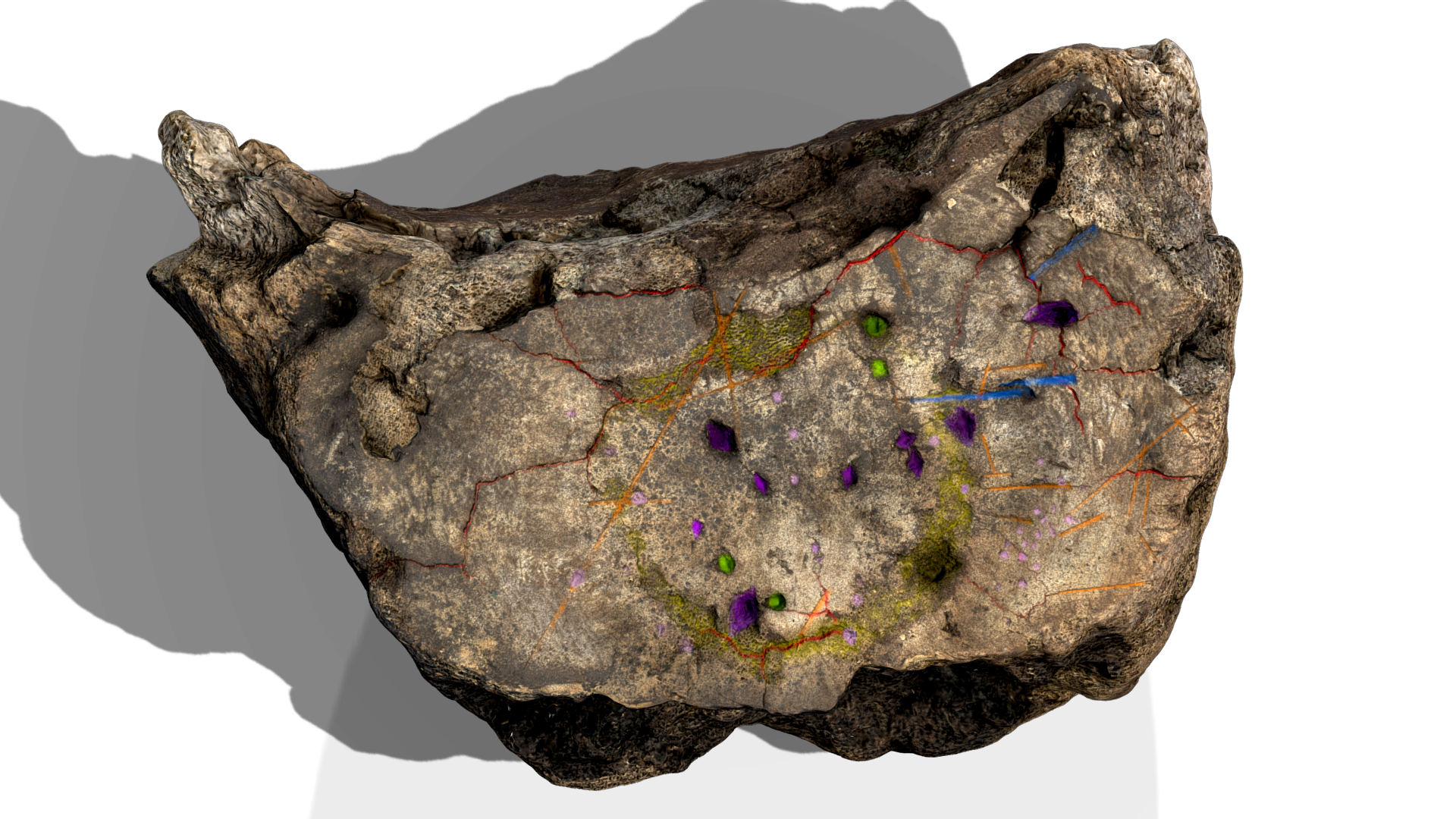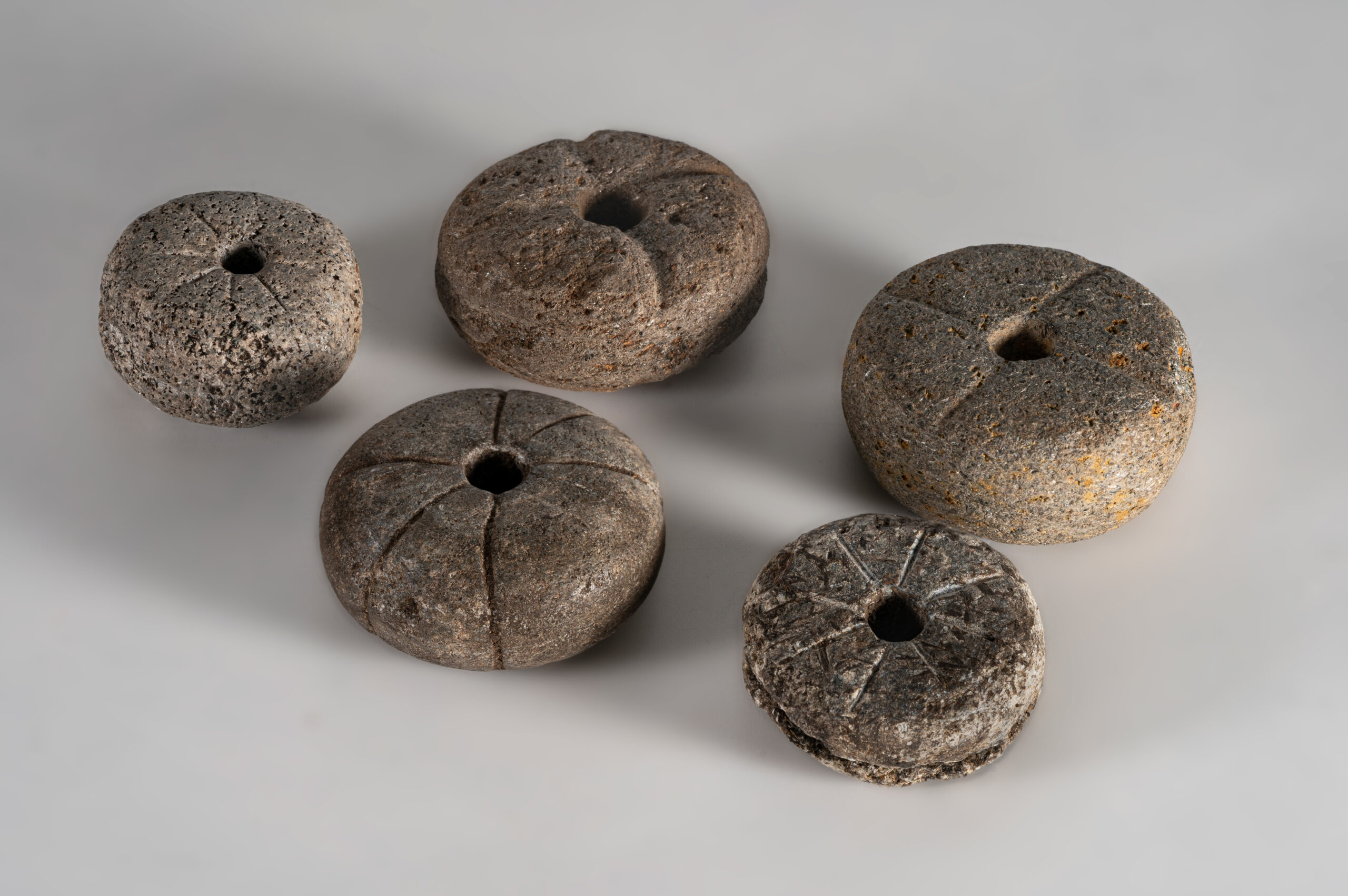Community excavations by Historic Assynt saw Clachtoll Broch fully excavated, revealing the story of a home abandoned in a hurry while the building burned. Hundreds of artefacts were left behind, lying where they fell for two thousand years.
Given the hurried nature of the broch’s occupants’ departure, the artefact assemblage from Clachtoll gives an unusually broad picture of life in the Iron Age. Archaeologists usually excavate the remains of buildings that were abandoned and left to decay, eventually becoming ruinous. As such, artefact assemblages are often dominated by items that were lost, discarded or deposited on purpose, but usually not many of those that were in active use. At Clachtoll, however, we find the material traces of lives as they were lived: a bundle of agricultural tools stacked against the wall; grain left in storage spaces; a sizeable collection of lamps for giving light. Together, these items allow us to see further into an Iron Age home.
Pottery
Around 300 sherds of pottery were found at Clachtoll, representing no more than 15-20 vessels. The pots were hand-thrown and some were decorated with applied, impressed or incised designs at the shoulder and above. Some of the decorative designs might be symbolic, conveying coded social messages and referring to the cultural and natural landscape of Assynt in the Iron Age. What’s more, the clay sometimes retains the potter’s fingerprints, giving us a tangible link to those who shaped and decorated the vessels.
3D Reconstructions of Vessels
The abundance of ceramic fragments recovered from the broch enabled researchers to create potential reconstructions of the vessels. Upon analysis, the sherds were categorised based the fabric type, the form of the vessel, number of sherds, their weight and dimensions, surface treatment, decoration manufacturing technique. This allowed us to further group the sherds into ten types of different vessels, five of which were digitally reconstructed and can be viewed in the gallery below. ‘Vessel C’ is the most complete from the entire assemblage. The models here show two possible configurations for the fully reconstructed large vessel based on the analysis of the shape of the sherds recovered.
Ring-headed Pin Decoration
One of the vessels features circular impressions made by pushing a ring-shaped object into the wet clay. The conservation process revealed a clear similarity between the dimensions of the impressions and a copper alloy ring-headed pin from the broch indicating this the same pin used to make these marks.
The circular impressions might represent the sun or moon, and the zig-zag lines between could represent the continual motion of the rising and setting of these orbs.
Wavy Cordon
Wavy cordon decoration might represent the sea, a fitting symbolism for a site like Clachtoll, in its exposed coastal location.
Cereal Cordon
An ear of barley pushed into wet clay creates an eye-catching effect. The incised decoration above might represent cereal crops pushing their way up out of the ground. This agricultural theme seems closely linked with the lifestyle of the people of Clachtoll, who were farmers first and foremost.
Let There be Light
A remarkable assemblage of ten handled steatite cups or lamps, and a single steatite bowl were found at Clachtoll. Despite their bowl-shaped appearance, these vessels are interpreted as lamps for providing light. The hollow held fuel and a wick lay on the edge
Feeding the Family
Nine rotary quern stones were found at the broch along with a knocking stone– a large stone with a central hollow in the top, used in processing grain – full to the brim with burnt cereal grains. This gives us a glimpse of how hurried the community’s departure from the broch must have been, with domestic tasks left unfinished.
Textile production
Spindle whorls found at the broch are evidence of textile production. They are simple, perforated objects used as a weight at the bottom of a stick, or spindle, using in spinning wool into yarn. All of those from Clachtoll were made of stone, some decorated with incised lines radiating outwards from the central perforation.
Combs
This antler comb was most likely used in textile production. Worn areas around the teeth tell us that it was well used. It was perhaps hung from a string and worn around the neck, or hung up out of the way for storage when not in use.
Whalebone Working Surface
This object – a working surface, made from the vertebra of an adult whale – is certainly one of the most intriguing from the entire Clachtoll assemblage.
Despite the areas of significant damage, this artefact is largely complete: what survives is the body of the vertebra, but the naturally protruding spinous and transverse processes of the bone are lost. Despite this damage, evidence of extensive use is visible on one face of the vertebra in the form of tool marks including diamond- and circular-tipped punches and a possible cleaver. Examples of these tools are not found within the artefact assemblage; their only trace is in the marks left behind after their use. We don’t know what was being worked on this surface but the tool marks suggest a variety of materials: possibly foodstuffs, hides, bone, wood and stone. The unusual circular area of wear in the centre of the face is more mysterious but might be related to spindle whorl production, perhaps smoothing the surfaces to finish.

Ring-shaped area of wear: This area is particularly intriguing. We have good evidence that the occupants of broch were producing spindle whorls made of a soft talc-rich schist (steatite). Could this ring-shaped area of wear be related to the production of the whorls?
Tool Marks | Deep linear cuts from the tip of an axe
Tool Marks | Linear chop marks, perhaps made with the sharp cutting edge of a metal cleaver
Tool Marks | Holes on the surface were produced by using at least two different punches.Here we can see one with a diamond-shaped tip, the other with a circular-sectioned tip is highlighted in green.
Tool Marks | Holes on the surface were produced by using at least two different punches.Here we can see one with a circular-shaped tip, the other with a diamond-sectioned tip is highlighted in purple.
Tool Marks | These shallow punch holes pits have been made by the tip of a fine punch or awl, however their shallow depth is suggestive of less heavy use than other punch tools.
Heat Damage | The whalebone has also suffered heat damage as we can see from the hairline cracks that cover the surface..














